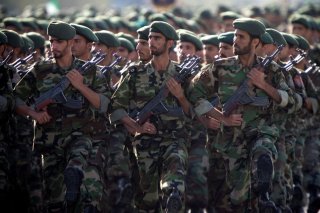Can Iran and America Escape the Cycle of Hatred?
Most Americans view Iran as a wild-eyed fanatic Muslim country out to spread terror throughout the Middle East, and with a deep hatred for the United States. The truth, however, is a bit more complicated.
The Iranian Hostage Crisis
The United States and Iran had a preview of what was to come on February 14, 1979. On that day, the Organization of Iranian People’s Fedai Guerrillas stormed the U.S. Embassy, took it over, and then took a marine hostage. The crisis at the embassy lasted for three hours; the embassy was returned to American control due to the efforts of President Carter and Iranian Foreign Minister Ebrahim Yazdi. The marine who had been kidnapped was later returned to the United States as the result of the efforts of President Carter and the American ambassador to Iran six days later.
The admittance of the Shah into the United States for medical treatment served as the inspiration of several Iranian students who plotted to take over the embassy for several days and then release the American diplomats. This changed, however, when Ayatollah Khomeini decided to support the students and benefit from the overwhelming support of the Iranian students who had taken over the embassy. He did this to gather Iranian support for his proposed Islamic Republic. By stoking public anger against the United States, Khomeini was able to pass his measure and the proposed Islamic Republic became a reality. It would not be until the Iraqi invasion of Iran that Iranian officials began to become serious about ending the Iranian Hostage Crisis. Suffice it to say that for 444 days, the Iranian government was in a quandary on how to resolve the crisis and not lose face with the Iranian people. The Iran-Iraq War gave the Iranian government the excuse it had sought to end the crisis with the United States. While some historians point to the election victory of Ronald Reagan as the catalyst for the change in attitude of the Islamic Republic, the truth is that once the hostages had served Ayatollah Khomeini’s political purposes, the Iranian government tried to find ways out of the crisis.
Aftermath
Since the crisis, Iran and the United States have been at odds with one another. Iranian politics have become intertwined with the political environment of the United States, from the Iran-Contra Scandal to the nuclear agreement with Iran known as the Joint Comprehensive Plan of Action; the troubled history between the United States has metastasized into a cancer that prevents either side from approaching the other without facing severe internal political turmoil. With the use of the Iranian Revolutionary Guards as well as backing Hezbollah, Iran has fomented violence not only against the United States, but against other Middle Eastern nations as well. The United States has imposed sanctions that have crippled the Iranian economy, forcing Iran to seek accommodation with China.
The attempt by former President Barack Obama into luring Iran into a more moderate course in international affairs was sabotaged by Iranian hardliners, who used cash returned to Iran to foment instability in the Middle East. False accusations by the Republican Party in 2016 that former President Obama had given cash to Iran proved a potent attack against the Democratic Party during the 2016 elections. The money that was returned to Iran was cash that had been seized by the US government during the hostage crisis of 1979.
Natural Allies Caught in a Downward Spiral
What is mind-boggling is that Iran and the United States should by all expectations be natural allies. Iranian culture is vibrant and dominant in the Middle East. Iran sits on the soft underbelly of Russia, and with its geographical location near the Strait of Hormuz, providing a geopolitical advantage that the United States could use in its actions on the international stage.
However, it is clear that relations between the United States and Iran will continue to suffer until the two sides can agree to simply disagree on what has happened in the past, and find a way to move forward into the future.
U.S. interference in Iranian political life in 1953 was the catalyst for the 1979 hostage crisis. And while the United States has expressed statements of regret for its involvement in the military coup that overthrew Iran’s elected government, Iranian clergy are loath to come to terms with the United States, as such an opening is a direct threat to their hold on power.
It is the Islamic Revolutionary Guard that allows the clergy of Iran to maintain political power and stifles repeated calls for liberalization in Iran. While the Iranian clergy have the support of the Islamic Revolutionary Guard, the clergy will maintain its grip on power, and there is a scant chance of any serious reconciliation between the United States and Iran.
Richard E. Caroll is a retired economist and has been published in Real Clear Defense, International Policy Digest, and Foreign Policy News.
Image: Reuters.

